On Polish roads
so Gine was reading, that if you are not on one of the big
roads from and to Germany/Prague a lot of the roads are quite old and small.... and as we already drove on
a lot of tiny and small roads, today we added the old part to it..... 1) potholes: one of the road had so many
potholes it was like a new game: find a
way around most of them and 2) no road
edge: if you go of the road – likely your car will be spin out because there is
deep holes and dirt and 3) the road is narrow and big trucks come fast..... so
it is an adventure and Paul has to concentrate to make sure we arrive safely...
Nowogrod
so we drive through the tiny towns of Poland and suddenly we
see a tank – so we stop and check it out: that means Gine runs all the way up
to the tank and the guns and enjoys the nice view on the river – during Paul is
enjoying the view from the parking lot. But he sees a concrete bunker – so we
walk down there and go on top and wonder why is there a tank and a bunker along
a river in a tiny town... and that is when we discover near the bunker some
trenches – now we are really curious.... ok there were signs about it, but then our polish is really not that great.
We continue our journey after this stop but later we check it
out:
Why is a tank here?
- it's a small town along the Narew river
- during the German invasion of Poland heavy fighting between Poles and the Wehrmacht took place here, leaving the little town nearly destroyed
Endless constructions
after driving for close to 1.5 hours on small tiny roads – we
look forward to the autobahn – so that we can speed up and be soon in the
sunshine... but this autobahn is not built: they are actually building it right
now – so yes it already has the nice autobahn name and you can see for at least
50 km a construction side - but we are on
the side behind some trucks and stand and move a little and stand more – go
through temporary roundabouts... and stand some more.... after wasting a whole
hour creeping along – we are totally tired of driving!!!! guess today was not
such a constructive day!
Parking in Warsaw
the plan was: we drive today into Warsaw and go to the Park
and relax there – the principal idea is a good one, but 1) you need to find
parking and 2) it is a huge park – we can't find a way in or a parking lot and
get frustrated – earlier we saw a nice fountain and should have gone there!!!
so let's go to the Airbnb and then decide what to do... I think we are both car
tired!!! Guess plans only work proper if everything is as it sounds...
our Airbnb
we found it right away... but even we had the instructions we
couldn't figure out how to open the gate....luckily someone with a remote came
and opened the gate – so we park and stand in front of the door: that is when
Gine finally figured it out: you have to press the key button – key doesn't
mean you key it in....
so we are in Building # 71 – gate D: we discover depending on
your apartment number you have either Entrance A, B, C or D.
and so we go inside and get confused again: there is the
elevator: the apartment is 46 – so we press for the 4th floor, but
here all apartments start with a 5, once you are on the 3rd floor
all the apartments start with a 4... that does not make sense at all!!!!!
But we are in a super nice apartment with a super nice and
comfy bed, a great balcony for morning coffee & breakfast and a very nice
host.
The largest mall in Poland
ok so what are our options: 1) after being tired we try to
figure out the bus system and go to down town and hope that we don't get lost
or 2) Paul said let's go to the mall.
And so we decided to drive to the largest Mall in Poland the
Arkadia Mall in Warsaw – we even found out that they have 4300 free parking
spots... as we wind our way through the traffic we do arrive – find the
entrance to the parking and a parking spot, now walking through the brand new
Mall – but our energy doesn't really last for shopping, I think tonight we are
too tired after a long day driving.... that means we end up in the food court
and try to figure out what we want.
Afterwards we discovered a nice fountain outside the mall...
on the way home we found another fountain but as it is no free parking and Paul
is not into paying for parking... and since we are tired we go back to our
place....
What about Poland & Warsaw today?
- in 1999 Poland became a member of the NATO and became an alliance with the west
- in 2004 they joined the EU – but they are still using the Polish Zloty as currency
- after WWII only 15% of the city was left standing, it was so bad that it was suggested to move the capital
Public transit in Warsaw
We discovered Warsaw is perfect for going around by Metro…
and Warsaw is the first polish town who has a lot of free Wifi… that means we
can always check where we are at: which Metro to take which made going around
super easy. So we with a super nice and sunny day we start and take the Metro
to town.
the Ghetto wall
our first stop starts out with the Warsaw Ghetto and we visit
one part which is still standing behind Sienna street 55, when we walked along
the street, we wondered how we can go behind the building when an older
Gentleman said: Ghetto wall and opened a door for us.... guess we are at the
right spot because there is a tour guide as well as some memorial plagues: it
is not really anything special: a small brick wall – but then after the Warsaw
uprising not a lot was left. But knowing about the history made is special. Later
when we were at the PKIN we saw on the ground also the borders of the Warsaw
Ghetto – which makes you realize how huge this Ghetto actually was.
The biggest Ghetto:
- before WWII Warsaw was the 2nd largest Jewish city in the world, after New York with 380.000 Jews making up 30 % of the Warsaw population
- ere was the largest Ghetto in Europe, it was started in Nov 1940
- on 3.4 sqkm lived around 400.000 Jews – with an average of 7.2 people per room
- in the summer of 1942: 250.000 Jews were deported from here during the “Grossaction” Warsaw under the disguise of settling to the east – but they ended up in Treblinka – the SS commissioner Waldemar Schoen oversaw the re-location and created an artificial famine in the ghetto – he eliminated all food to go in the ghetto: around 100.000 died of starvation
- Adam Cerniakow was the Eldest and in charge of the Judenrat and hoped to save lives cooperating with the Nazis – but in July 1042 he committed suicide
- the Nazis built a 11 miles long brick wall around the Jewish quarter, the construction of the wall started on April 1, 1940 – it was typically 3 m high and topped with barbed wire – escapees were shot on side
- the borders changed many times and in 1943, when the Ghetto got dismantled the walls got torn down – except one tiny piece (and we were there)
the Soviet PKIN
you can't come to Warsaw and not see some of the soviet foot
prints: so we went to see the Palace of Culture and Science of – Palac Kultury
I Nauki or PKIN. Yes it does look like what we think of as a soviet style...
and we read you can go on a viewing platform – so after admiring it from the
outside we went in – wrong entrance – and in on the other side paid our Zloty's
and up we went on the 30th floor the “Taras”: and there we had and
amazing view, because it is a wonderful sunny – even we should mention it was
very windy. We saw towards old Warsaw, the nice parks in front of the building,
and the funky building called “the sail” Zlota 44. And did I mention we have
now part of history with our permanent
- it is the tallest building of the city – at the time when it was built it was the 2nd tallest building in Europe with 231m – and it is still the highest building in Poland
- it is a gift to the people of Warsaw from the USSR and got built in 1952 and opened in 1955
- it resembles Moscow’s’ Socialist realist tower blocks and is a symbol of the soviet domination
What's to know about the communist era of Poland?
- From 1945 – 1989 Poland was under Soviet dominance, with a communist-controlled government formed in Warsaw implemented by Stalin – ignoring the polish government-in-exile: which was since 1940 based in London
- Poland became for the first time in history an ethnically homogenous state without minorities: the Jewish population was destroyed, the Germans were expelled and the Ukraine’s re-settled: Before the war 1/3 of Poland’s population was made up from minorities
- Poland lost proportional the most humans in WWII: 17 % of their population: an estimate of 6 Mill
- The Soviet Style secret police reached up to 53.000 – for each 800 polish people was one Security
- In Dec 1970: the treaty of Warsaw was signed: when German Chancellor Willy Brand ask on his knees for forgiveness for the crimes the Nazis had done
The Umschlageplatz
Coming to Warsaw, we wanted to come to this place, the place
from where the train lefts to the concentration camps. On the 45th
anniversary of the Warsaw Uprising they made the memorial – which is resembling
an open freight car
- From here the Jews were send to the camps, it was the collection point - from here they were sent in cattle trains mostly to Treblinka to be killed
- The other big Umschlage platz was in Lodz (which we visited earlier on our trip)
- Grossaktion Warsaw went from 22 Jul 1942 – 21 Sept 1942 – with around 300.000 deported from here, on some days up to 10.000 –
- You find 448 names engraved in the wall: each name for 1000 victims: the 450.000 Jewish people living in the Ghetto from 1942-43
- It has the message “along this path of suffering and death over 300.000 Jews were driven 1942-43 from Warsaw Ghetto to the gas chambers of the Nazi Extermination camps”
The Path of remembrance
from here we walked
along the path of remembrance: we came by some black stones: there are 16
granite blocks – once here was the Jewish community.
Mila 18: today a
little park with a small hill – and when we came by: a school class was sitting
here. Here was once an underground bunker in the Warsaw Ghetto – it was here
that the leader of the Ghetto Uprising Mordechaj Anielewics died. By the way
Mila 18 was discovered by the Germans on May 8, 1943 – most of the commanders
commided hten suicuide. This path ended at the:
Memorial of the heroes of the Warsaw
Ghetto = Pomnik Bohaterow
Getta in front of the Jewish Museum:
- It was set up in 1948 when the city was still in ruins in memory of the Ghetto uprising
- It shows men, women & children struggling to leave the burning ghetto and procession of Jews led to a death camp
- It was one of the most courageous attempts to oppose the final transport of the Jews. After the Grossaktion the jews were starting to built bunkers and smuggle weapons into the ghetto. 50.000 – 60.000 relatively healthy young prisoners stayed in the Ghetto, they resisted the final liquidation and organized a Jewish fighting organization. They constructed bunkers, got ammunition from outside. During the final 3 days the Nazis allocated for their deportation they were met with resistance
- the final Ghetto uprising battle started on April 19, 1943, when the Nazis send several thousand troups into the Ghetto. Juergen Stroop with 2000 soldiers blew up the ghetto buildings and burnt them block by block – murdering anyone they could capture. Around 6000 perished in fired and bombed buildings and 7000 Jews got killed – the Germans lost 300
- the other remaining around 50.000 were send to Treblinka and Majdanek
- one of the surviving fighters said “our motivation was that we could pick the time and place of death
- the Ghetto was almost entirely leveled during the uprising – 4 buildings on Prozna street are still original
The Aftermath of the
Holocaust:
- Many Jews feared to return to the previous homes because of Anti-Semitism’s that persisted in Europe and in Poland
- In post-war Poland there were a number of progroms: violent anti-Jewish riots: the largest in Kielce in 1946 where at least 46 Jews got killed and many beat
- Most went to Western Europe and were put in Displacement camps such as Bergen-Belsen
- The largest survivor organisation: Sh’erit ha-Pletah pressed for emigration opportunities, the immigration to the US was limited and the British limited the immigration to Palestine and many borders in Europe were closed for homeless people
- The Jewish Brigade group established in 1944 aimed to facilitate the Exodus of European Jews to Palestine – they organized illegal immigration ships – in 1947 the British forced the Exodus with 4500 Holocaust survivors to turn around
- With the establishment of Israel in 1948 – it is estimated that 170.000 Jewis came to Israel from 1948-53
- Under President Trueman around 41.000 displayed people immigrated to the US – 28.000 of them were Jews
- In 1948 the US passed the Displaced Person Act and provided 400.000 immigration Visa between Jan 1949 – Dec 1952 – 68.000 of them were Jews
- To avoid accusations of exclusive reliance of personal testimony which later generations may perceive as biased all cases in the Nuremberg trial were based on thousands of documents and translated in 4 languages, as well as artefacts photographs : 19 teams went through all the evidence and interviewed witnesses and visited the sites
We continued our walk
through the park Ogrod Kasinkich: which means a little bit green, a pond and a
kind of castle and then we came to the:
the monumnet to the heros of the uprising:
perfect for Paul to sit down and rest and for
Gine to explore and walk around the soldiers from the AK (Armia Kajowa – Polish
Home Army) waiting for a fight: they emerge from the shattered and ruined city
and the others going down into the sewers (and close by is actually the
entrance to one of the sewers).
What happened in the Warsaw Uprising?
- it broke out on Aug 1, 1944 started by 23.000 of the home army, other underground units joined
- the polish government was functioning openly from London: organizing administration, medical services and rescue
- it went up to 50.000 volunteers, they started a 63-day heroic struggle for the liberation of the city, they captured the city center as well as some other districts.
- to quell it the German came with 15.000 garrison with army, police and SS – some of the known for their cruelty: air force, panzer and artillery were used against rifles, pistols and grenades
- The Red Army was outside of Warsaw, but refused to assist the insurgents
- Germans were mass exterminations aimed against the Warsaw civilian population
- The insurgents became POW and deported, the deserted city was destroyed and burned
- More than 40.000 polish insurgents and 180.000 civilians were killed – as well as 25.000 German troops were killed
- It was here that same fierce fighting happened

 Nowogród, Podlaskie Voivodeship, Poland
Nowogród, Podlaskie Voivodeship, Poland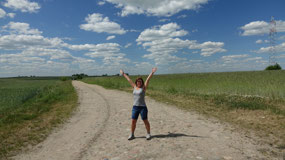
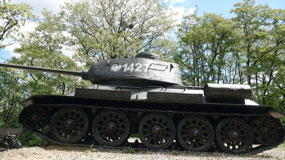
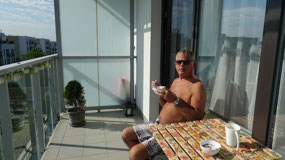
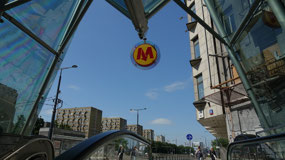
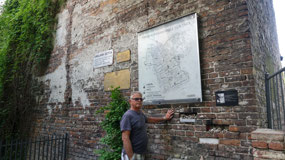
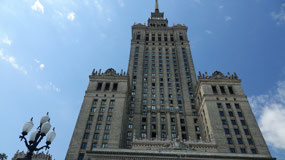
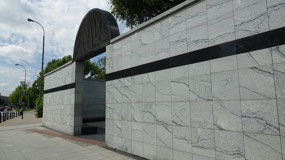
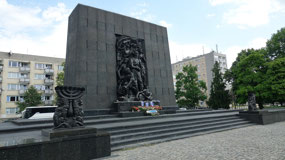
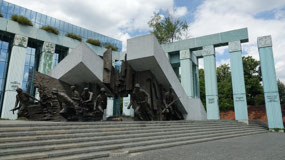



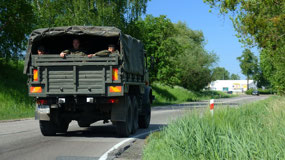
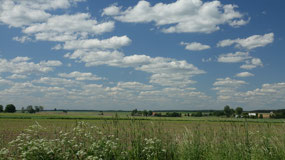
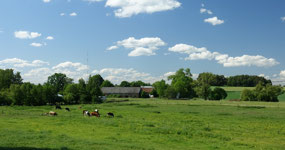
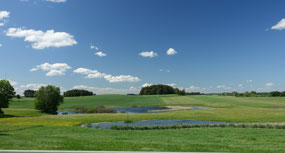
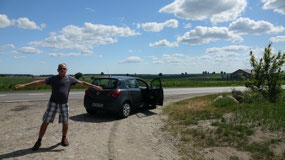
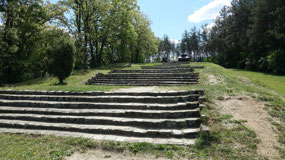
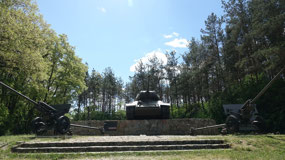
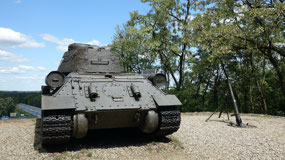
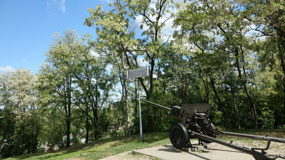
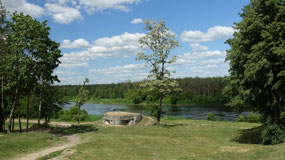
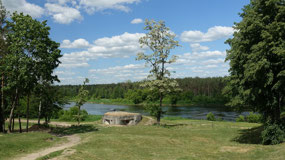
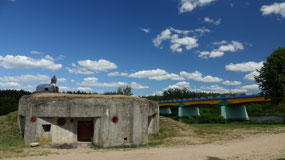
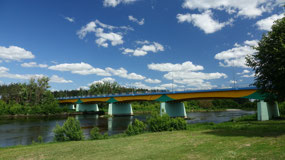
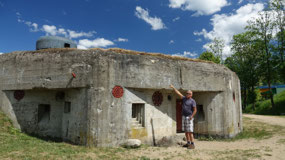
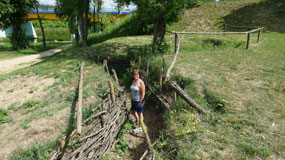
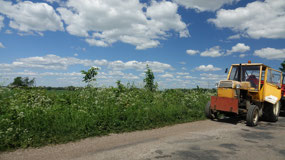
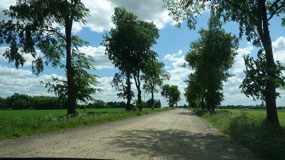
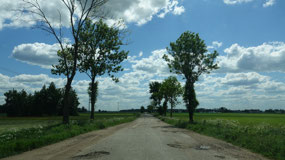

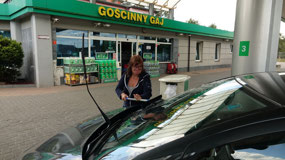
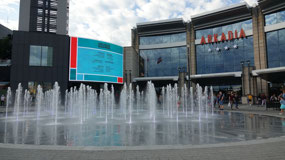
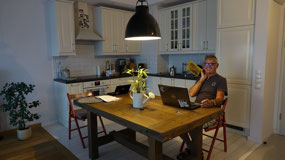
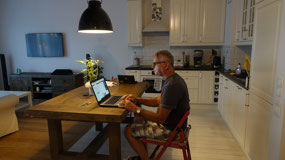


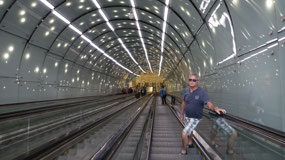
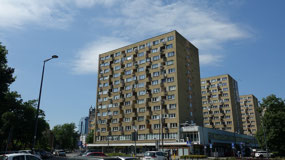
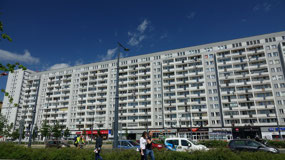
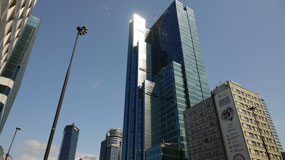
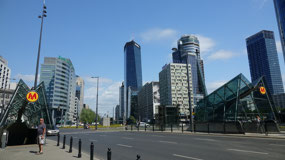
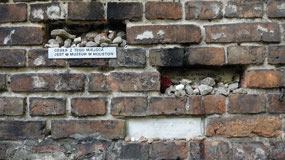
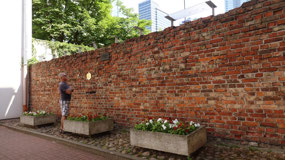
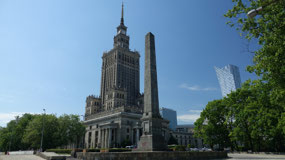
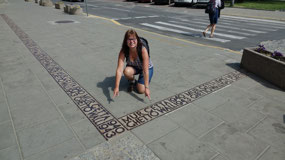
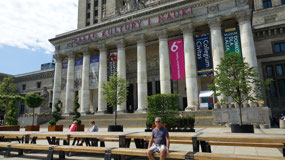
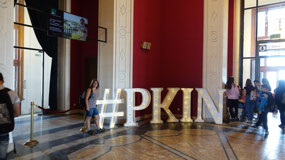
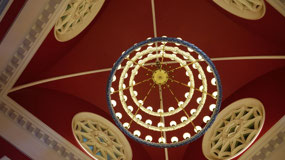
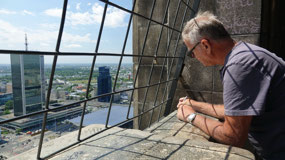
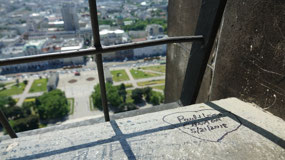
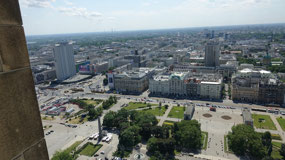
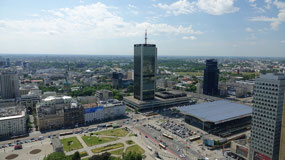
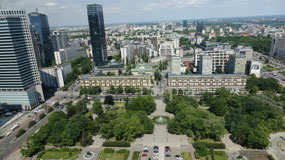
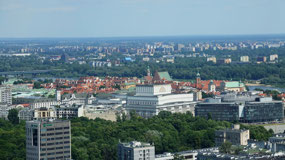
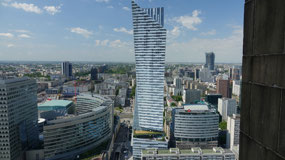
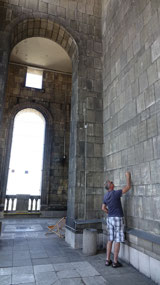
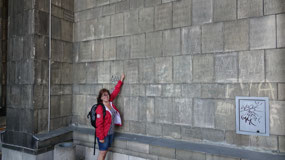
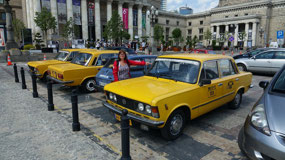
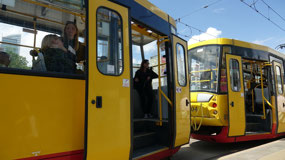
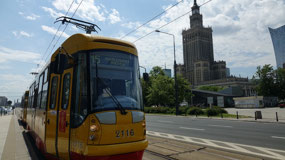
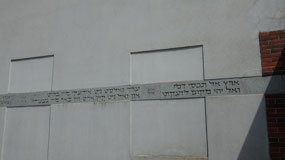

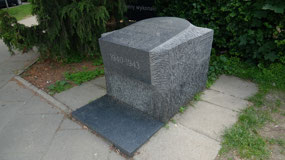
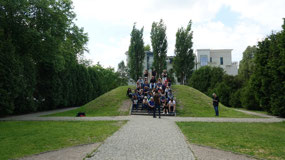
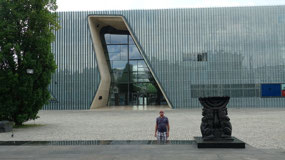
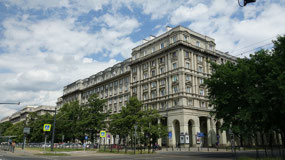
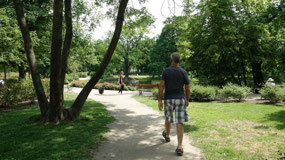
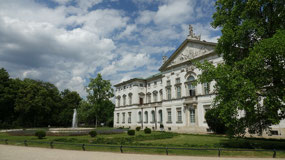
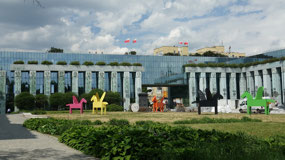
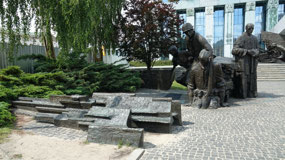
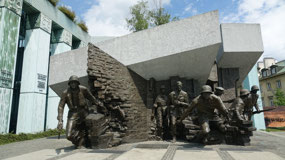
2025-05-23